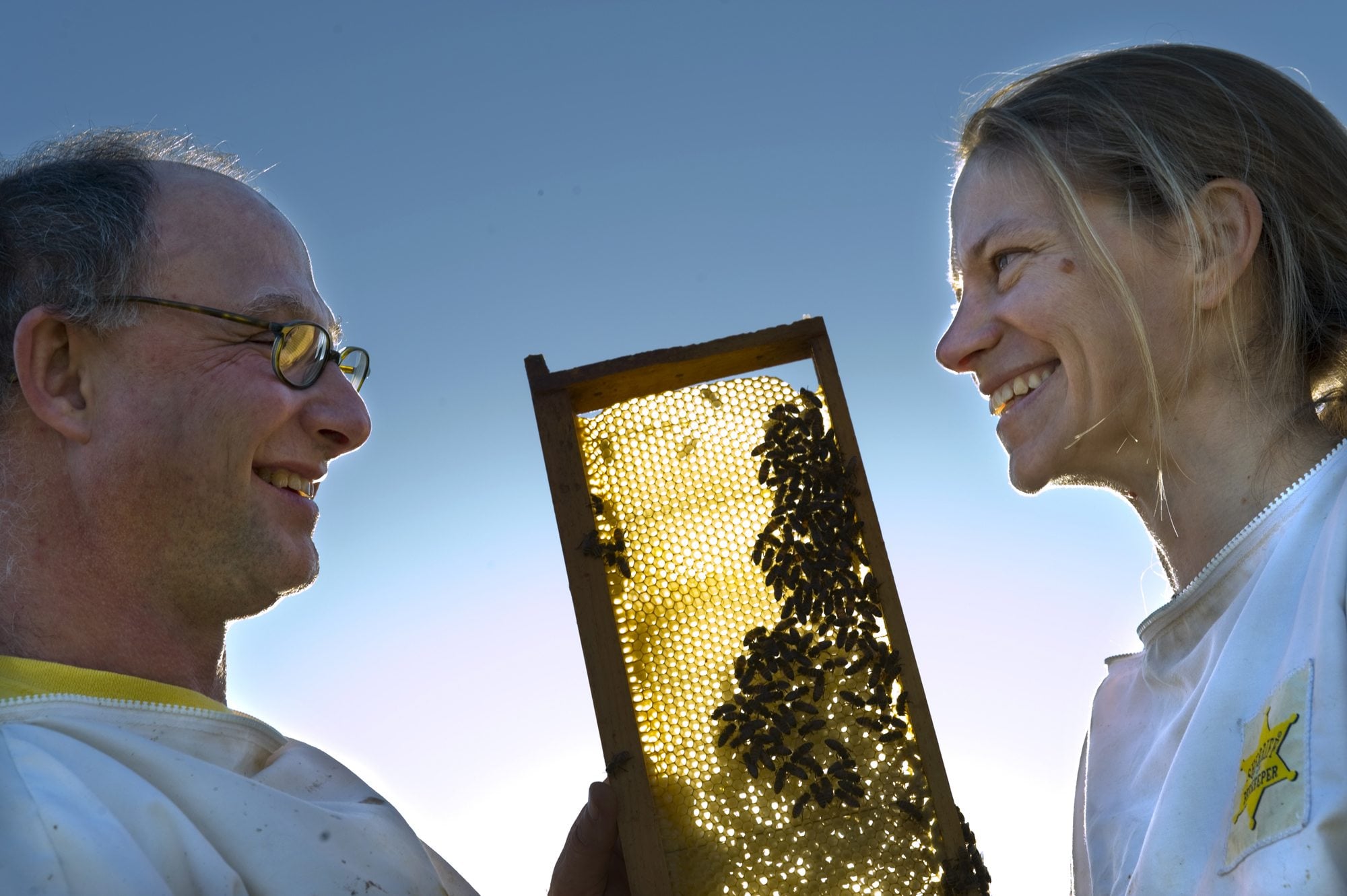WASHINGTON, D.C. — On a farm on the outskirts of Frederick, Md., Kelly Rausch and Adam Finkelstein crack open a wooden beehive whose design dates to the 19th century. Inside, they point out a superbee they have made for the 21st century.
In two months, the carefully bred queen bee has built a large, productive colony that knows how to cluster against the cold and fill the winter larder with honey.
More important, her bees have sought out and destroyed a sneaky parasitic mite that feeds on their baby sisters. “The bees are definitely taking care of everything,” Finkelstein said from behind his veil.
The desire for a bee that will look after itself might seem pretty basic. But with as many as one-third of honeybee colonies routinely dying off each year and the rest requiring extraordinary care, the quest for a better bee has become critical.
Scientists are trying to find the cause of colony collapse disorder, the 5-year-old phenomenon of worker bees suddenly disappearing. Other maladies abound and could be a factor in the disorder: new pests and diseases, the effects of pesticides and the strain of industrial-scale pollination.
Farmers rely on the insect not just for honey but also to pollinate much of our food.
Rausch and Finkelstein run a business called VP Queen Bees, which supplies breeder queens to producers for as much as $165 a queen, from their five bee yards in Frederick County, 50 miles northwest of here. The producers, in turn, propagate daughter queens by the thousands and sell them to commercial beekeepers and backyard hobbyists for about $30 each.
The object: a queen that will pass on to her colony the traits of disease and pest resistance, gentleness, productivity and winter hardiness.
The single greatest threat is an Asian mite called the varroa. It feeds on honeybee young and adults and spreads viruses.
Commercial beekeepers have turned to heavy feeding and medication to try to keep hives strong in advance of their biggest gig of the year. In the new year, beekeepers will assemble more than a million hives, half the nation’s stock, in the almond groves of California’s San Joaquin Valley, to ensure a successful pollination of the 2012 nut crop.
Fighting back
One of the bright spots has been the development of a bee that battles the mite.
Marla Spivak, an entomologist at the University of Minnesota, began breeding bees to fight back nearly 20 years ago. She froze pupae and waited to see which colonies would fastidiously remove the corpses from the hive. This hygienic trait, first observed in the 1940s when young were killed by disease, was effective in breaking the life cycle of the mite. She called her queens Minnesota Hygienic.
Separately, scientists at the U.S. Department of Agriculture’s honeybee lab in Baton Rouge, La., were studying why some of their hives had low mite levels. After about 10 years of work, they finally figured it out: The bees in those colonies were able to detect mites hiding in sealed cells and feeding on developing young. The bees uncapped the cells and dragged out the mites, along with infested brood. Hybridizers label these neatnik bees varroa sensitive hygienic, or VSH.
As vital as the hygienic bee is, the breeder must preserve existing desirable traits: a reluctance to sting or swarm, for example, as well as genetic diversity as a hedge against future diseases or pests.
“That’s why gains are so slow,” said Susan Cobey, a bee geneticist at the University of California and Washington State University. “I would say we are just in the infancy of bee breeding.”
Finkelstein, however, says he thinks he is close to achieving his primary aim of creating a bee that can survive with just basic husbandry. He says he hasn’t medicated his hives in 14 years.
Creating a superbee is one thing; getting professional beekeepers to accept it is another. For now at least, there is enormous resistance by the commercial beekeeping industry to using improved bee stock without the continued regimen of medication and supplemental feeding.



